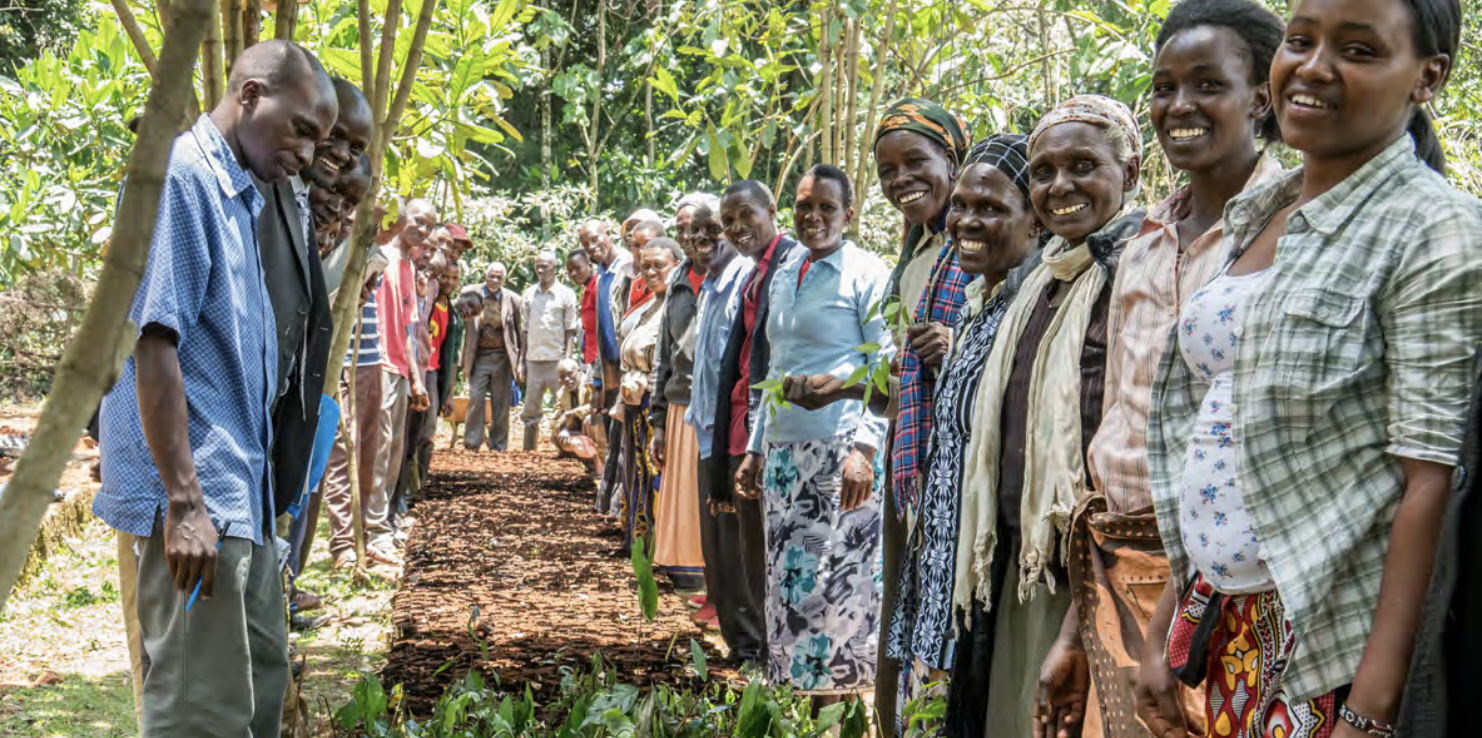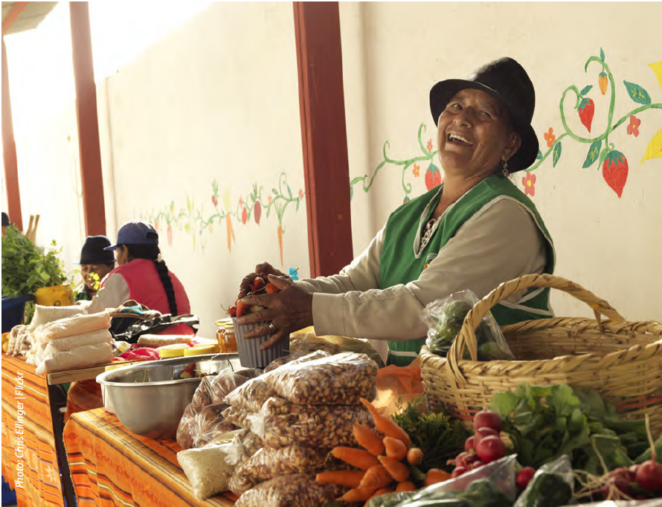Advancing Gender Equality and Climate Action: A Practical Guide to Setting Targets and Monitoring Progress

Introduction
A new guide has been launched to address a common refrain in development practice: ‘How exactly do we integrate gender into our climate projects?’. The guide, entitled Advancing gender equality and climate action: A practical guide to setting targets and monitoring progress, lays out how to: i) understand diverse people’s needs and capabilities in a climate project context, and ii) assess gender-responsive solutions and project planning based on local people’s knowledge.
It discusses the theory and practice of setting gender-related targets and indicators in climate projects and programmes, and the importance of Monitoring, Evaluation and Learning (MEL) systems for tracking progress and making improvements over time. The guide is a collaboration between CDKN, ODI, SNV, CARE and Mercy Corps.
The guide first introduces key rationale and frameworks for integrating gender and social inclusion in climate projects, before exploring what this means in practice through a series of case studies. Each case examines how different organisations have:
- developed gender-responsive objectives and targets, appropriate to their sector and context,
- created relevant indicators and MEL systems to track and understand progress, and
- managed their projects adaptively in response to emergent learning.
The case studies were co-written by CDKN and lead project managers in each of the respective organisations. The guide’s authors are Mairi Dupar (CDKN/ODI) and Patricia Velasco (CDKN) with substantive contributions from: Inga Brill (SNV), Andrés Córdova (CARE Ecuador), Harko Koster (SNV), Vaidehi Krishnan (Mercy Corps), Sokundarun Lim (SNV), Jennifer Linkletter (SNV), Rik Overmars (SNV), Beza Tesfaye (Mercy Corps).
*This weADAPT article/case study is an abridged version of the original text, which can be downloaded from the right-hand column. Please access the original text for research purposes, full references, or to quote text.
Case Studies
The guide features five case studies, as follows.
- Cambodia Horticulture Advancing Income and Nutrition program (CHAIN)
The main objective of the CHAIN programme is to support low-income, smallholder farmers in Cambodia to increase their productivity and income and to improve food security, nutrition and climate resilience. To identify and analyse the gender-based constraints in agriculture, the programme used a toolkit by AgriProFocus (available here: https://agriprofocus.com/toolkit) to collect information about women’s and men’s differential access to and control over assets, resources and services.
- Energising Development (EnDev), Tanzania
The overarching goals of the Energising Development (EnDev) programme in Tanzania, implemented by SNV, are to tackle energy poverty, increase access to cleaner energy sources for households, and increase the amount of sustainable income for women and men. EnDev III’s approach to clean energy development seeks to be gender-responsive in several ways. The programme promotes women’s equal participation in the programme as cook stove producers and behaviour change communication advocates – and also targets women as buyers and users of improved cook stoves.
- Promoting Sustainable Partnerships for Empowered Resilience (PROSPER), Malawi
PROSPER aimed to build the resilience of households and communities, strengthen shock-sensitive social protection, expand climate-smart agriculture, reduce exposure to hazards and risks, achieve food and nutrition security, and diversify and improve income generation and economic opportunities.Early in PROSPER’s history, the consortium engaged gender and social inclusion (GESI) specialists, C12 Consultants, to work with the programme to devise a GESI strategy. The strategy was developed through several steps. It began with an analysis of the implementing partners’ GESI strategies (because the partners had their own institutional strategies) to identify areas of overlap and coherence; followed by a desk review of gender-related data from the four target Malawian districts.
- Educating Nigerian Girls in New Enterprises (ENGINE)
ENGINE had two main goals. The first was to support in-school girls successfully transition to the next phase of education, or complete their current education cycle and enter the workforce, through enhanced learning experiences and an improved enabling environment. The second was to give girls whose schooling had been interrupted the opportunity to build their functional literacy and numeracy, while building assets and diversifying income sources. Although not explicitly a climate project, the rural communities of northern Nigeria where ENGINE was situated are highly climate-vulnerable. In this context, a climate-resilient strategy for households and individuals is to diversify into less climate-vulnerable livelihoods.
- Enabling Andean Communities to Adapt to Climate Change, Ecuador
The main objective of the project was to reduce the vulnerability to climate change by establishing a resilient model of family production while contributing to the conservation of the Andean páramos, which provides water for human consumption and irrigation. The project did not include gender indicators from the beginning, mainly because it was principally a conservation project. However, CARE has tools such as the “Climate Vulnerability and Capacity Analysis-CVCA”, which is used to gather and analyse information on community-level vulnerabilities to and capacities for climate change; the CARE gender and inclusion toolbox, and the CARE gender marker.

Key Lessons and Outcomes
This guide uses rich and varied case studies to demonstrate how highly gender-responsive climate projects can achieve ‘double wins’ for development and climate action, in practice. Two specific recommendations are highlighted, built on lessons learned from the project case studies.
- Climate projects must explicitly advance women’s development.Climate adaptation and mitigation projects can and should be designed and implemented to empower women and advance gender equality – and, so achieve progress on Sustainable Development Goal 5. By contrast, gender-blind approaches to climate projects risk exacerbating gender inequality and so undermining development.
- Climate projects are better for the climate when they involve women’s leadership and meaningful participation.Designing and implementing climate projects in ways that respond to the specific needs of diverse women, build on their strengths and capabilities, and empower them is vital for achieving climate-related objectives. Gender-responsive climate projects simply work better.
Suggested Citation:
Dupar, M. and P. Velasco. (2021). Advancing gender equality and climate action: A practical guide to setting targets and monitoring progress. Cape Town: Climate and Development Knowledge Network.
Related resources
- Explore CDKN's gender training materials
- The guide complements CDKN’s training materials, including powerpoint packs and serious fun games on gender and social inclusion
- Is adaptation to climate change gender neutral?
- What about gender in climate change? Twelve feminist lessons from development
- The SEI Gender and Social Equity Programme
- Mainstreaming Gender in Climate Change in India
- SEI Research Synthesis Brief: Gender, development and sustainability
(2) Comments
Thank you for the pieces of scientific information that you share!
We’re glad you enjoy them! What other kind of information would you like to see?